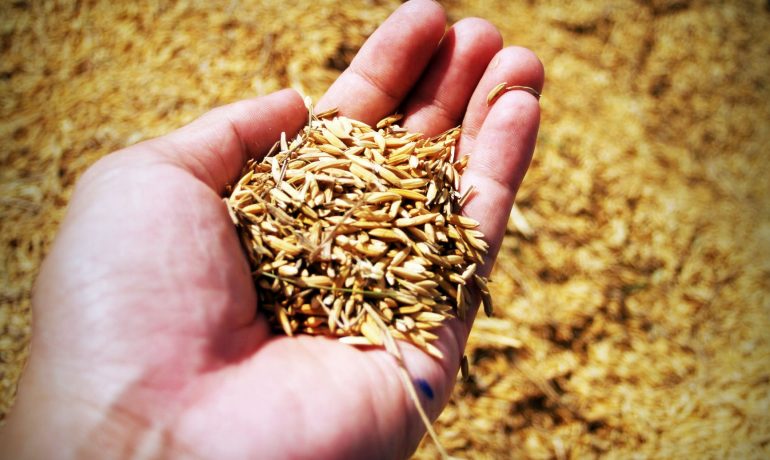Celiac disease occurs when an individual is pathologically sensitive to a substance known as gluten. Gluten is a type of protein found in grains:
- Wheat
- Barley
- Rye
Celiac disease is also sometimes called sprue. But what is celiac disease exactly? It’s an autoimmune disease, which means that the body attacks its own cells. The exact cause is unknown. It can affect both adults and children, including infants. A normal person can eat grains containing gluten with no problem. But when a person with this condition consumes gluten, it causes severe damage to the intestinal wall, especially to certain structures called villi.
Symptoms
Villi are tiny projectiles that extend out from the intestinal lining. They absorb nutrients from digested food as it passes through the intestines. If these villi are damaged, the person will be unable to assimilate key nutrients necessary for health. Gluten can cause parts of the digestive tract to become seriously and chronically inflamed. Some symptoms of celiac disease in adults are:
- Bloating and gas
- Abdominal pain
- Diarrhea
- Fatigue
- Anemia
Weight loss may also occur. Celiac disease is serious and can lead to severe complications if left untreated.
Celiac disease can also cause acid reflux, headaches, joint pain and reduced bone strength. In infants, it’s a relatively common cause for FTT, or failure to thrive. Babies may refuse to eat, have swollen bellies, exhibit signs of poor muscle growth, and vomit frequently.
Children older than two may show the following symptoms:
- Being short for their age
- Weight loss
- Late onset of puberty
- Diarrhea
- ADHD
- Headaches
Celiac disease in children must be recognized and treated promptly. Developmental delays may be permanent. Children complaining of abdominal discomfort for more than a few days to a week need to be evaluated by a physician immediately. This is especially true if he or she is also pale.
Dermatitis herpetiformis
Not all celiac disease symptoms are related to the digestive tract. This disease can also cause a rash to appear on the buttocks, knees, elbows and torso. The rash looks like tiny blisters on the skin. It may occur with abdominal symptoms, or it may occur alone.
Treatment
Celiac disease can only be treated through diet. Eating any amount of gluten will further damage the intestinal villi and aggravate symptoms. Diagnosis of this condition is made through a biopsy procedure. Once all gluten has been eliminated from the diet, most patients see marked improvement within a matter of weeks. The villi begin to heal. Although adults may not be able to achieve full recovery from villi damage, most children’s intestinal lining will heal completely, as long as there is no further exposure to gluten. Celiac disease can currently only be managed, not cured.
A Future Treatment
It’s possible that a new treatment for celiac disease may soon be available. Clinical trials for a drug known as larazotide are underway. The drug works by helping to mediate the inflammatory response within the intestines. Although not a substitute for a gluten-free diet, the drug would help protect the villi against damage. So far in the trials, larazotide has been demonstrated to be safe and effective.
What is Safe to Eat?
Meat, fruit, rice and fish are all naturally free of gluten. Just be sure that these foods are pure and don’t contain gluten. For example, unless you prepared it yourself at home, the breaded coating on fish would be highly suspect. There are also substitutes for wheat flour:
- Rice flour
- Potato flour
- Bean flour
- Soy flour
Creative recipes using these different kinds of flour are readily available online. They’re also commonly used in prepared gluten-free foods.
Oats
In most cases, oats can be safely consumed. This is because oats contain a protein known as avenin. Although avenin is similar to gluten, most people with celiac disease can tolerate it. Sometimes there will also be a sensitivity to avenin. In that case, oats must be avoided as well. However, this is uncommon.
While oats does not contain gluten, a study showed about 88% of the tested oats had some level of contamination. You can check more inforation on this and what to consider in the link provided to ensure your oatmeal is actually gluten free.
Living with Celiac Disease
Gluten is present in an amazingly wide variety of foods. For example, soy sauce may contain it. It’s also a hidden ingredient in many processed foods. If you have celiac disease, you should stick to whole, natural foods as much as you can. Eating out could be hazardous to your health. You must also read food labels very carefully, always on the lookout for hidden sources of gluten.
Recently, some excellent gluten-free products have become available. Most natural food stores now carry many gluten-free items. Even many regular supermarkets offer an adequate selection of food items that are labeled as being gluten-free. This even includes breads, cakes and cookies.
Conclusion
It’s not easy to avoid gluten-containing foods. It’s particularly difficult for children. They want to eat what their friends eat, and they may not have the ability to understand that gluten is damaging their bodies and causing them to feel sick. For adults, joining support groups may be very helpful in learning how to live with this disease. Both adults and children will benefit from a consultation with a dietitian. A dietitian specializes in nutrition and can suggest meal plans and other ways to eat well on a gluten-free diet.


